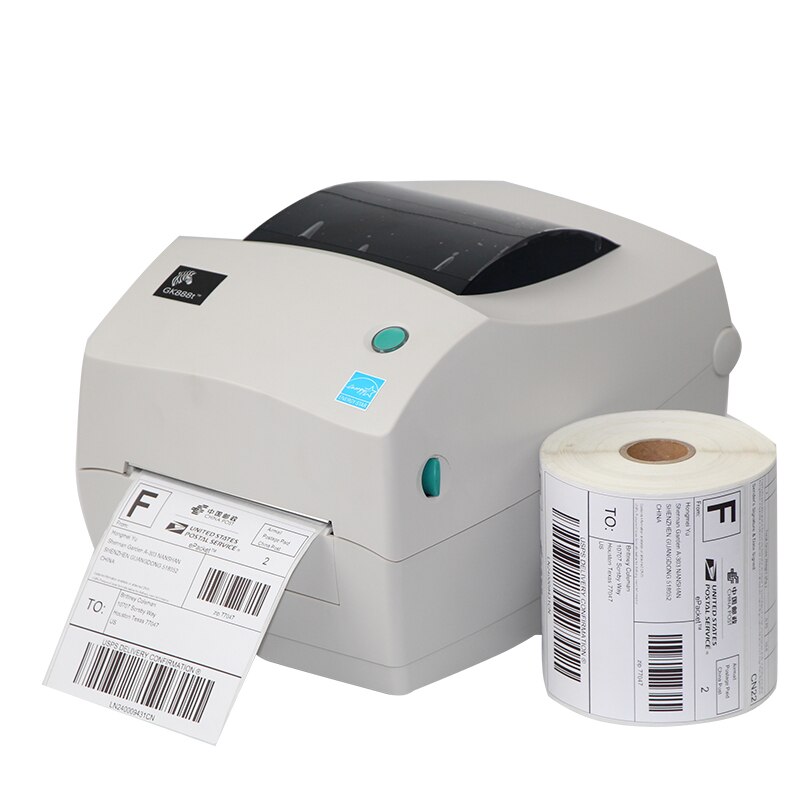What is a thermal label printer?
Thermal label printers do not spray liquid ink through a nozzle to produce the required images. Instead, the thermal printers use small heating elements to transfer or activate pigments. These printers are generally used to create barcodes, labels, way-finding makers, safety signs and shipping labels, etc.
What are the advantages of a thermal label printer?
There are numerous reasons to consider a thermal label printer for your business. Given below are the advantages of owning a thermal label printer:
- Durable: The signs and the labels which are created with thermal printers stand up to a wider variety of weather conditions and they last longer than the printer with ink.
- Versatile: Thermal transfer print labels, signs, and documents are used to meet numerous requirements. They are also used for graphics-based floor marking, arc flash labels, and the labels that are meant for extreme conditions such as cold storage.
- Less maintenance: One of the reasons that the thermal printers last longer are because of the presence of fewer moving parts. Making them easier to maintain and can be run more reliably.
Disadvantages of a thermal printer: With all the qualities and great features of a thermal label printer, there are certain disadvantages to them as well. You must know about each of the advantages and disadvantages of the printer before making a purchase. Given below are the complications that you may face with a thermal printer:
- Cost: The special materials that are used in the case of thermal printing processes are comparatively more expensive than that of the other printers. Making them a bit more expensive than their other counterparts. You will have to invest a handful of money to purchase even the basic model.
- Color choice: Thermal printers are only able to print in fewer colors and the high heat sets a limit on using wax or resin choices. Both of the options lead to restricting the color limit and the application options as well. This is why the users cannot print high-quality photographs by using thermal printers.
Despite these disadvantages, the printers are in high demand because the graphic products offer custom label service, allowing the employers to design a unique label with 4 spot colors.
Reasons that prove that the thermal printers are superior to their inkjet:
- Consumables: The paper roll is the prime consumable item in a thermal printer. By replacing a single roll of paper, the thermal printers can print up to 100 kilometers of the prints or receipts. The inkjets printers need more upkeep and also need printer heads, color cartridges, and paper to be replaced regularly.
- Reliability: The mean time between failures is the standard set for measuring the average time between failures for any device. In printers, it is either the average length of the paper printer before a failure occurs or the average number of lines to be printed. Thermal printers have higher reliability because of their minimal number of moving parts. A paper is pulled across a heating mechanism that heats the thermal paper to print the images or characters. The inkjet printers are more susceptible to errors, very often prone to print heads clogging in case the printer is not constantly working. They commonly face broken paper feed carriages and running out of ink cartridges, which in turn put them out of action.
- Speed: Thermal printers are fast as compared to inkjet printers. A thermal printer has the potential to print more than 250mm per second, they can also print in a parallel fashion. On the other hand, the inkjets can print at approximately 92mm per second. This is due to the printer head which moves across the paper.
- Cost of ownership: Due to today’s competitive market, the price of a thermal printer has dropped over the years.
Zebra Technologies:
Zebra technologies are one of the world’s most reliable manufacturers of smart printing systems. They have more than 50 offices around the world, they are based in Lincolnshire, Illinois. Their offices can be found in China, England, Singapore, and the Netherlands. The Zebra technologies are renowned for their thermal barcode label printers, printer supplies, and RFID label printers. The system is so popular that the 500 top US companies that are ranked in the Fortune Magazine list use the printers manufactured by Zebra Technologies. The developmental department has crafted a specialized formatting language called ZPL stands for Zebra Programming Language. This allows the operator to have a command and control over the formatting of the label and also the process.
What are the advantages of Zebra printers?
Zebra printerss possess multiple advantages that have enriched its users through the years:
- They can fit into the category of desktop printers. The size of the printers gives them the advantage of being flexible and hence can prove to be useful for small scale or big companies.
- The designed proportions of the Zebra printers offer the possibilities of multiple applications.
- Zebra printers are manufactured for today’s highest demands that are including high resolution, quantity, label size, interface.
- Smart technologies help the users to customize the printer according to their needs. The RFID technology is used to customize the printer.
- The users can decide when and where they require a specific label and the Zebra printer will deliver it effectively at the correct position.
These are the various benefits and disadvantages of inkjet as well as thermal printers. If you are looking for a well-suited printer for your company, make sure to do the required research. It is advised to make a list of the features that you will need in your company. Once the requirements are decided, you can move forward with checking the various printer’s benefits and if they will be a good fit for your company. It is crucial to do the research and then make the final decision. If you own a small-scale industry, you need to look for a printer that can be effective yet provides excellent labels. In the case of large industries, the speed must be high and the label prints must be produced in bulk.



